The Canon nFD 2.8/35 offers really good image quality for very little money. I think it is a very good solution for most budget oriented Sony Alpha 7 users.
Sample Images
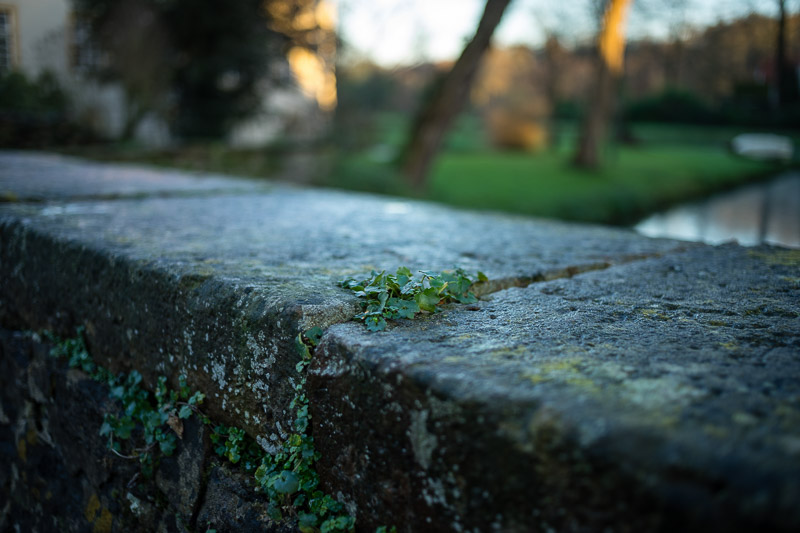
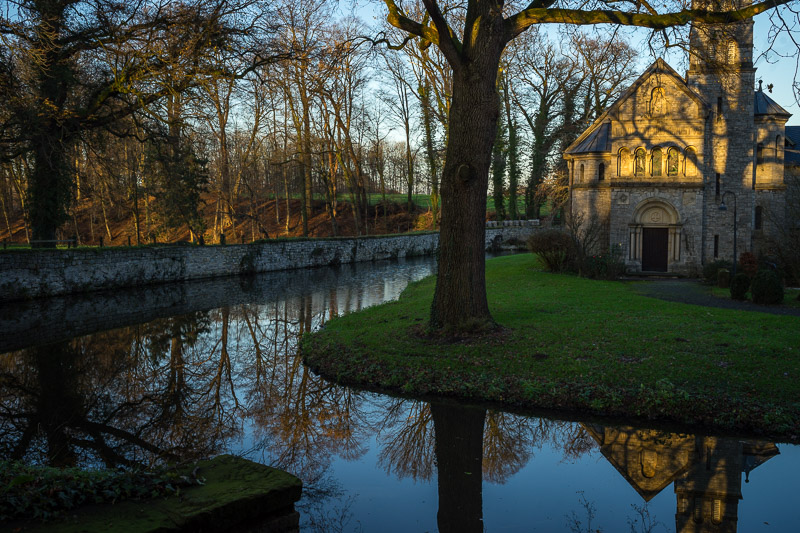
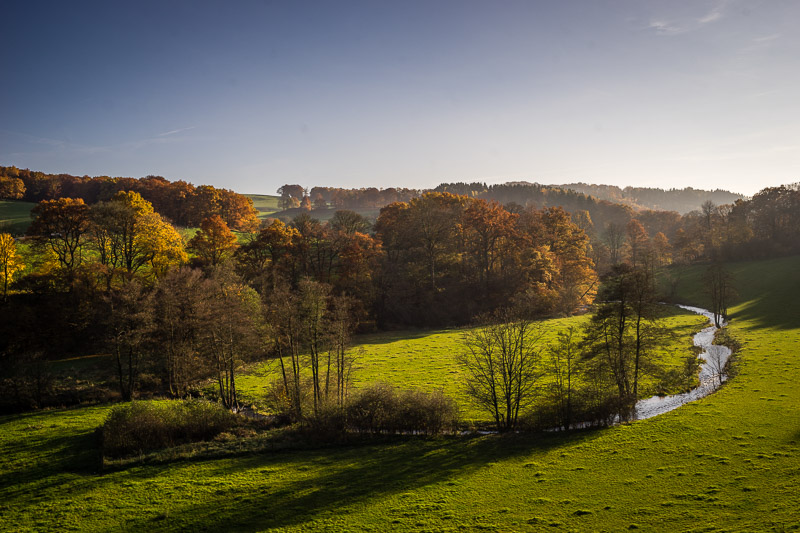
Specifications
-
- Diameter: 63mm
- Length: 40mm
- Filter Diameter: 52mm
- Weight: 165g
- Number of Aperture Blades: 5 (slightly curved)
- Elements/Groups: 6/5
- Mount: Canon FD
The Canon new FD 35mm 1:2.8 usually sells for around $35-60 at ebay.com (affiliate link).
In Germany you can buy it for 40-70€ at Amazon.de (affiliate link)
Versions
Canon made only two 2.8/35 lenses with FD mount.
The new FD 2.8/35 which this review is about and a much bigger and expensive Tilt/Shift lens.
There are at least three versions of their 2/35 and one 3.5/35 but those are totally different lenses.
Compatibility
You can use the lens on a wide range of old Canon FD-mount film-cameras like the Canon A1 or AE-1.
Because of the flange-focal-distance of Canon FD lenses all adapters for DSLR cameras either contain an optical element which will reduce image quality a lot or you lose infinity focus. I wouldn’t bother to use one of those adapters.
Mirrorless cameras have a much shorter flange focal distance and you can buy adapters for Fuji-X, Sony-E, Micro Four Thirds and Samsung NX which won’t degrade image quality or lose infinity focus
I usually recommend Sony Alpha 7-series cameras for the use with older manual lenses because they are the only ones with a fullframe sensor and in my experience most lenses work best on the larger sensor. In my eyes there is little reason to use this lens on a APS-C camera, 18-55 Kit lenses will give better results.
Here are links to adapters to mount the Canon FD 2.8/24 to Sony E mount cameras: Amazon.com |Amazon.de (affiliate links).
I use an expensive Novoflex adapter (link to my review) but the cheaper ones usually work well enough.
Build Quality
Build quality is good by today’s standards but if you compare it to other manual lenses the lens feels a bit cheap.
The lens is mostly metal but some parts like the aperture ring at the front plate are made from plastics. All the markings are engraved.
The Canon FD 2.8/35 is a small and very light lens and it is very well balanced on my Sony Alpha 7.
The focusing ring travels 80 degrees from 0.35m to 1m and a further 20 or so degrees to infinity. I think that’s a very reasonable focus throw. I would have wished for a little more resistance though, it is a bit too loose.
The aperture ring has half-stops from f/2.8 to f/22 but it requires too much force to move it and the clicks aren’t distinctive enough so it can be a bit hard to select the right aperture stop just by feel.
All in all operation works well enough but other lenses handle a bit more pleasant while the Canon new FD 2.8/35 feels a little bit cheap.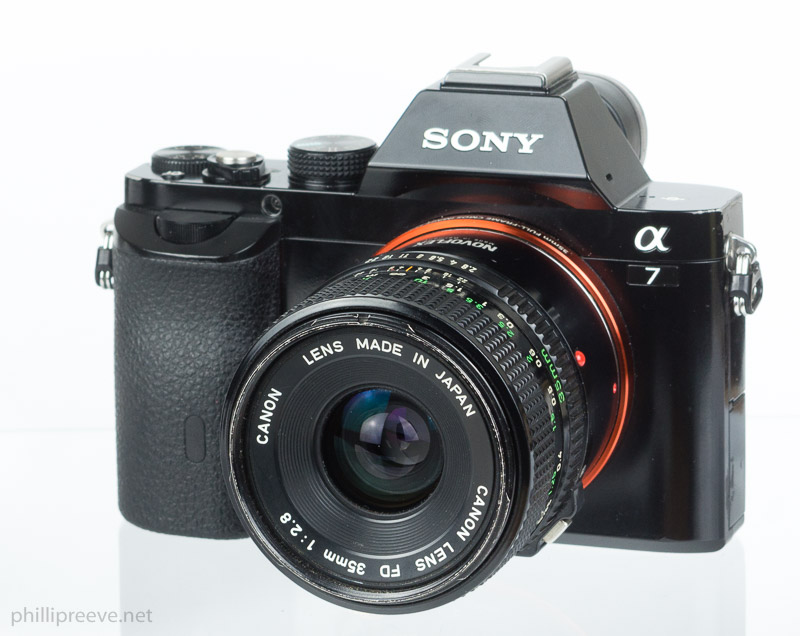
Lens Hood
I don’t own the original lens hood, it’s name is “BW-52A”.
Close Focusing Distance
0.35cm is a usual close focusing distance for a 35mm lens and you can get some nice background blur. It is a bit softer up close and it makes sense to stop down to f/4.
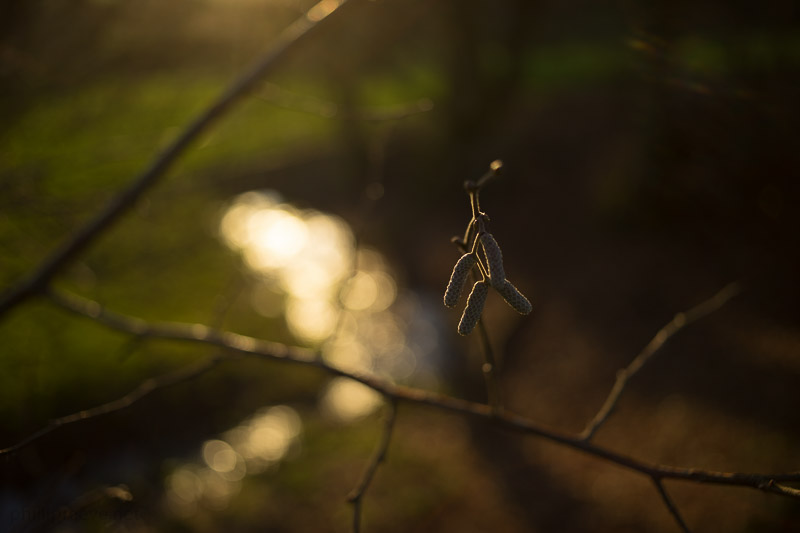
Image Quality
Vignetting
Notable but not excessive at f/2.8. Only slightly reduced by f/4 and only visible for very critical applications from f/5.6.
Flare Resistance
Quite good for a lens of this age. There is a little contrast loss and only minor ghosting.
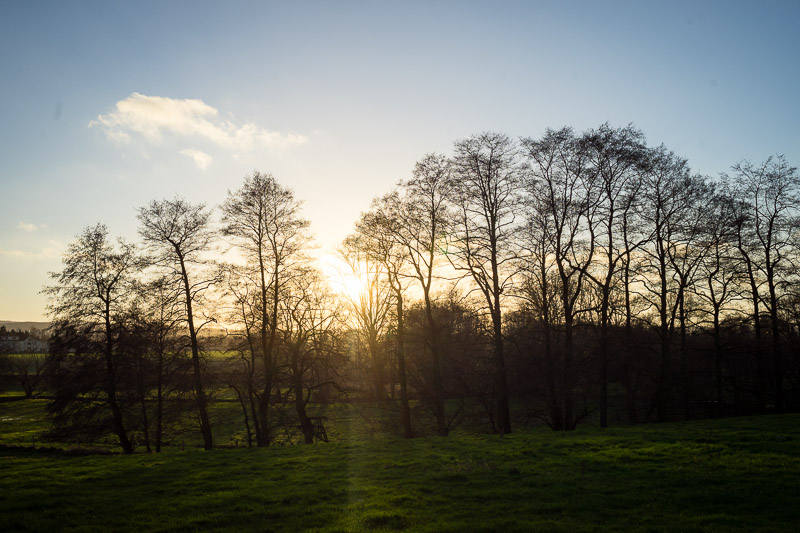
Distortion
There is some barrel distortion. For critical applications you can correct it very well with a LR setting of +5.
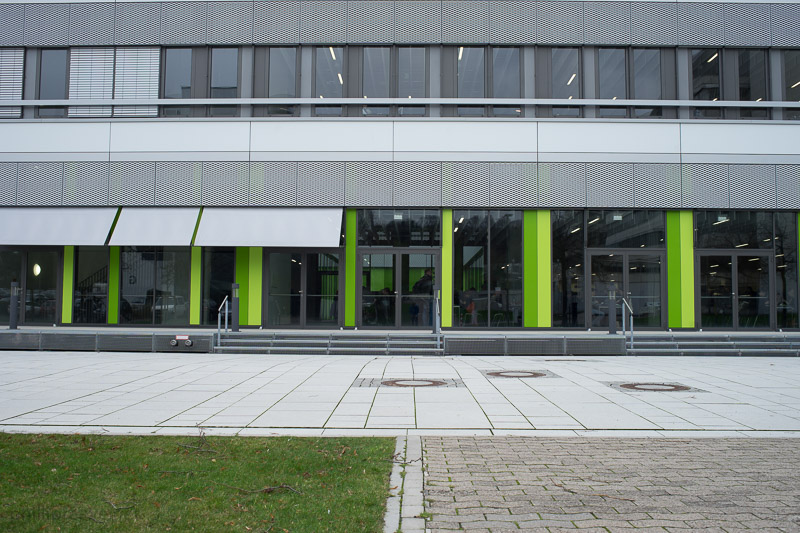
Chromatic Aberrations
There is very little lateral CA and you can get by without software correction most of the time.
Bokeh
Bokeh is good with smooth backgrounds and it does deteriorate only a little at longer distances.

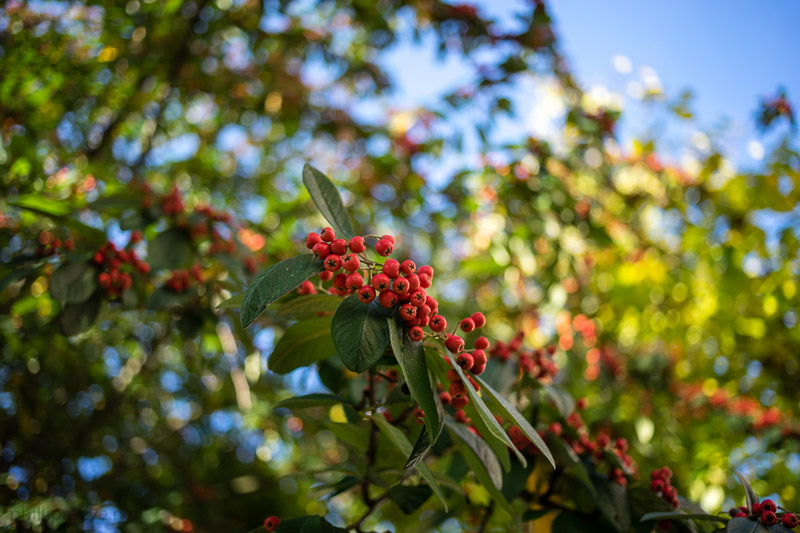
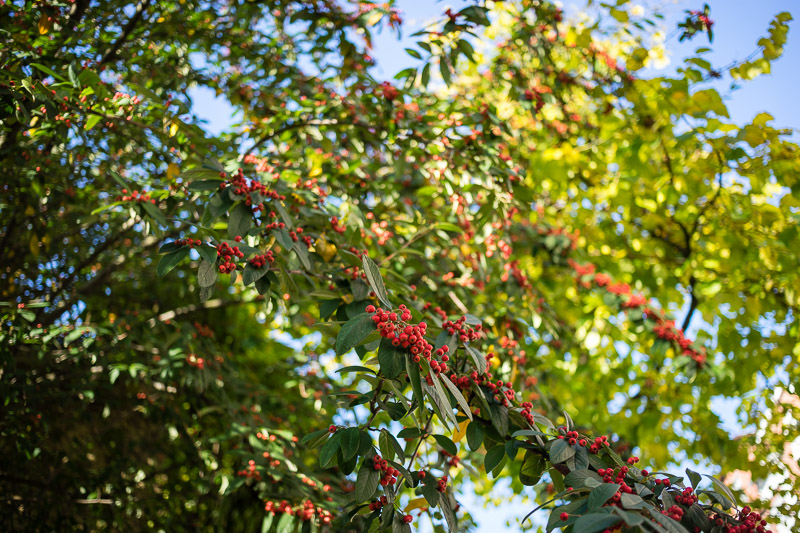
The Canon nFD 2.8/35 only has 5 aperture blades. So from f/4 out of focus highlights take on the shape of a pentagon.
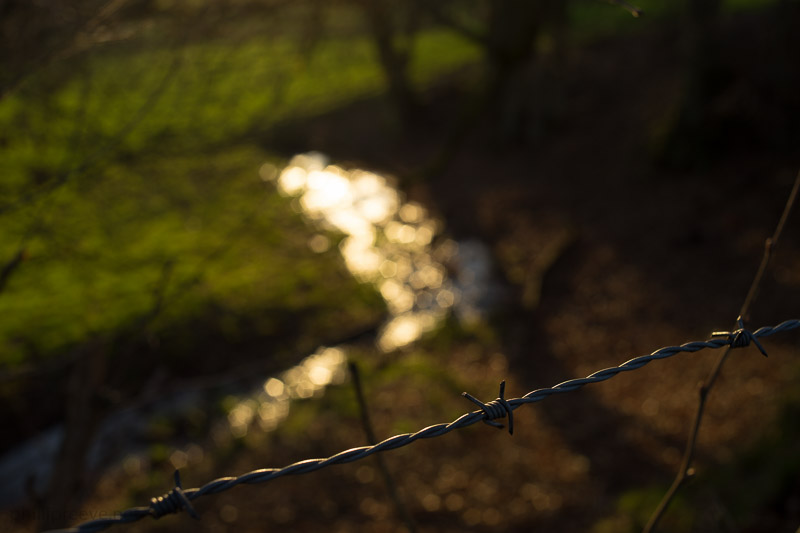
The cat-eye effect can be a little annoying at f/2.8.
Sun Stars
The Canon creates 10-pointed-sun-stars which are not very well defined.
Contrast
Contrast is very good from f/2.8 and improves a little if you stop down to f/4.
Sharpness
The Canon nFD 2.8/35 is very sharp in the center from f/2.8, stopping down to f/4 makes the center excellent and it becomes softer again from f/11.
The midframe region is good from f/2.8 but benefits from stopping down to f/4 as well from were it is very good.
The corners show good resolution at f/2.8 but very low contrast, for very good results it makes sense to stop down to f/5.6 and they are best at f/8.
Compared to
Canon nfD 2/35 – I owned one some time ago and it is a decent performer very similar to the nFD 2.8/35. Advantages are mainly the faster speed and 8 aperture blades.
Sony FE 2.8/35 – I have never used this expensive lens but some tests suggest that it isn’t any sharper. It is quite a bit smaller.
Minolta MD Rokkor 2.8/35 – Both lenses are very simliar in size and performance. I prefer the Minolta’s build quality but the Canon has more effective coatings.
Sony FE 4/16-35 ZA OSS – Much bigger, much more expensive. At f/4 the nFD is sharper. Stopped down to f/8 the Sony FE comes close to the Canon.
Voigtländer 1.7/35 VM – It is a much more exciting lens because it has exceptionally good bokeh, it isn’t any bigger but built more solid. Downsides are vignetting, field curvature and price.
Conclusion
good
|
average | not good
|
The Canon nFD 2.8/35 is a very good lens optically and leaves very little to be desired. From f/2.8 it is very sharp and most aberrations are well corrected. Bokeh is nice and the lens is quite flare resistant.
The only real weakness of this lens is it’s build quality. The lens feels somewhat cheap and other lenses are more pleasant to use.
So all in all the Canon nFD 2.8/35 is a very capable lens and I can recommend it without reservation. Only If your focus is less on the output and more on the experience of using your lens then there are better solutions.
The Canon new FD 35mm 1:2.8 usually sells for around $35-60 at ebay.com (affiliate link).
In Germany you can buy it for 40-70€ at Amazon.de (affiliate link).
If this review was helpful to you, please consider using one of my affiliate links. I will earn a small commission on your purchase and it won’t cost you anything. Thanks!
Full Resolution Sample Images: Canon new FD 2.8/35 on Sony a7
All images are processed in Lightroom from Raw. Many more samples in my Canon nFD 2.8/35 flickr album.
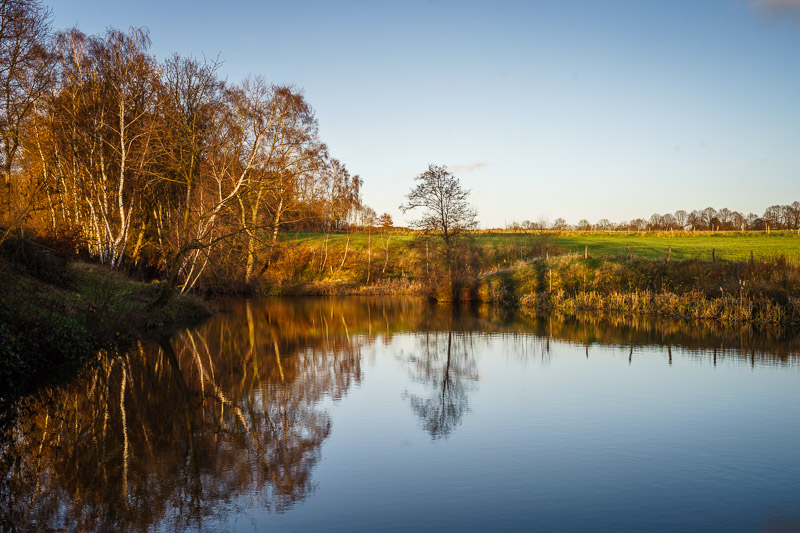
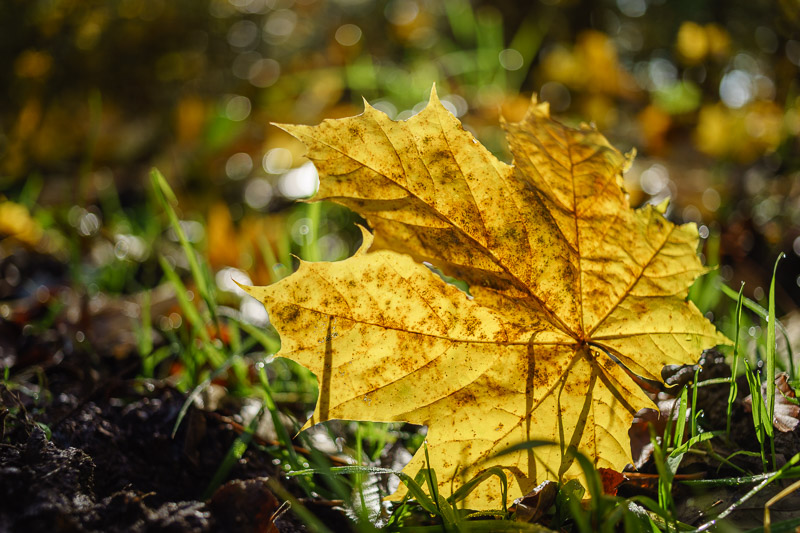
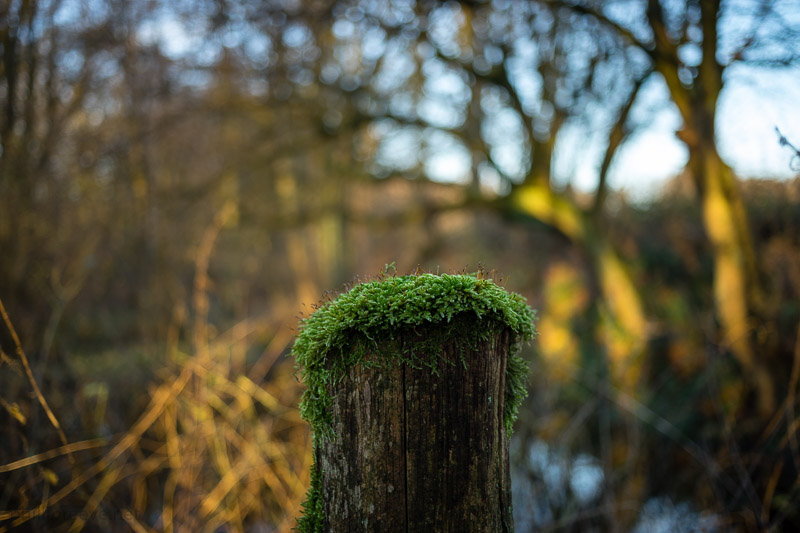
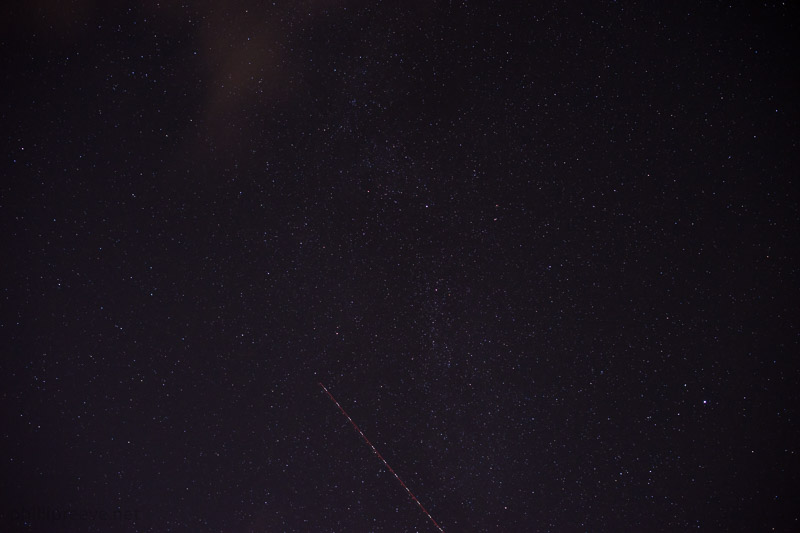
Other Articles
This site contains affiliate links. If you make a purchase using any of the links marked as affiliate links, I may receive a small commission at no additional cost to you. This helps support the creation of future content.
Latest posts by Phillip Reeve (see all)
- Review: Samyang AF 75/1.8 FE - April 12, 2021
- The FE-List now has 113 lenses on it - March 25, 2021
- 2020 – Year’s end review - December 28, 2020
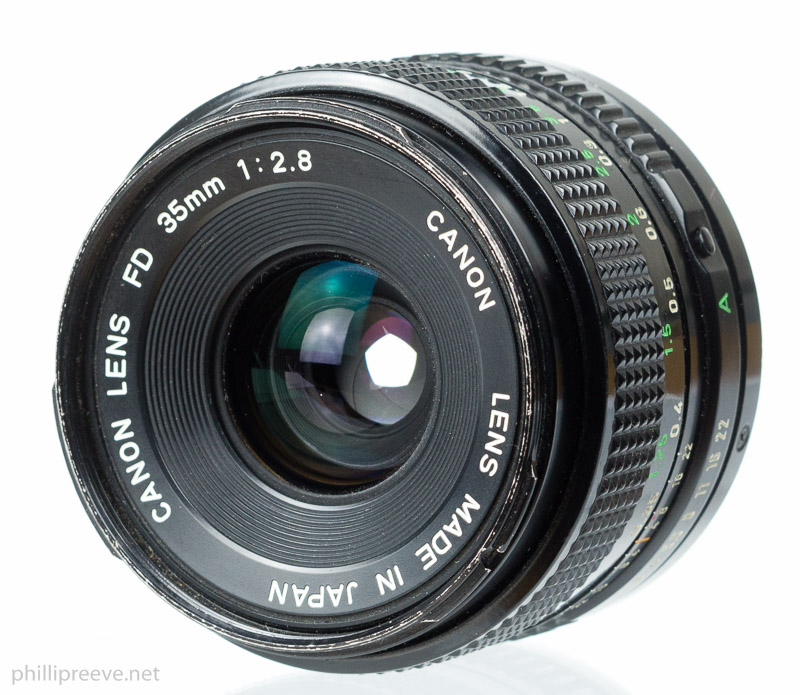
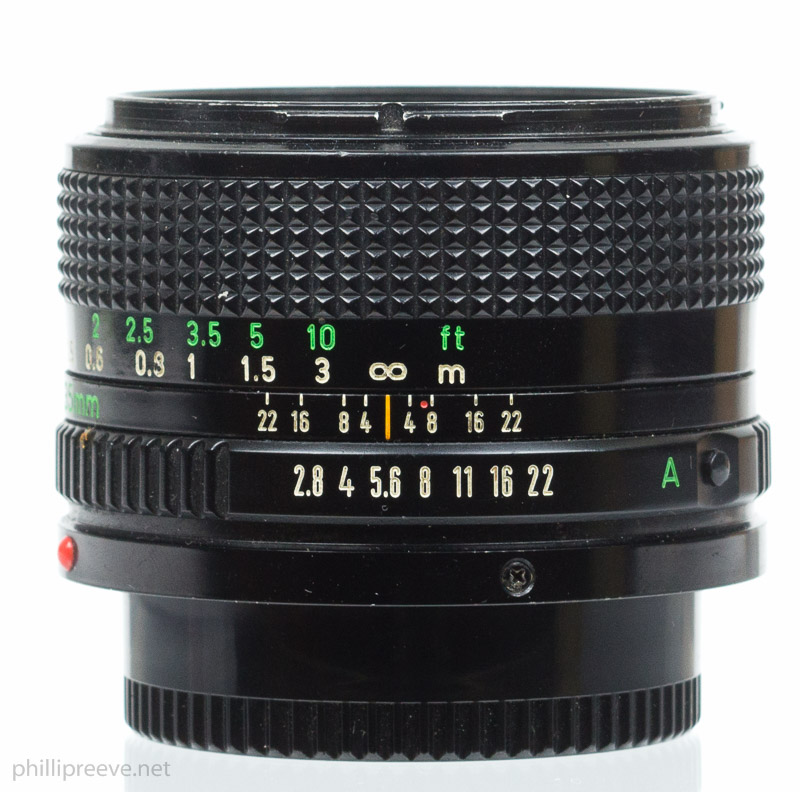
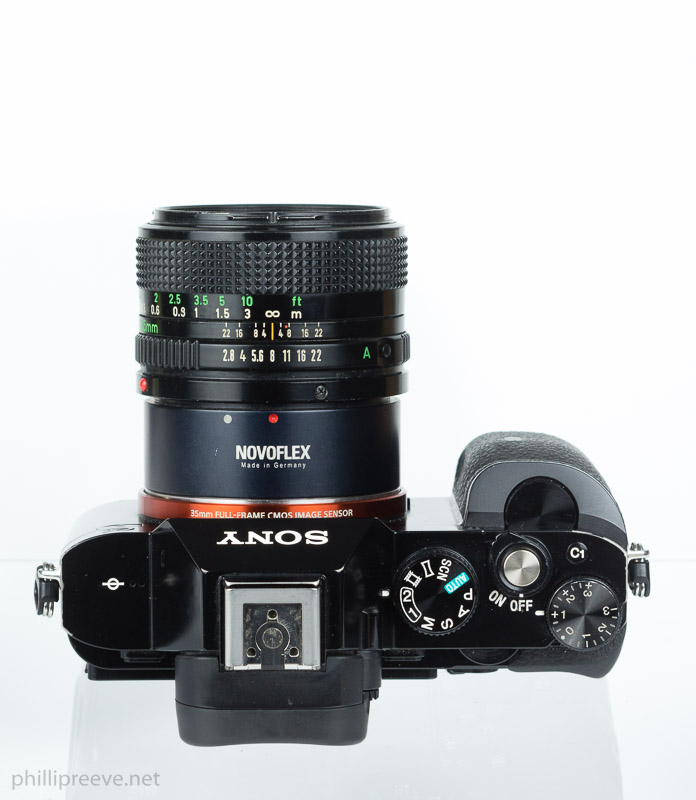
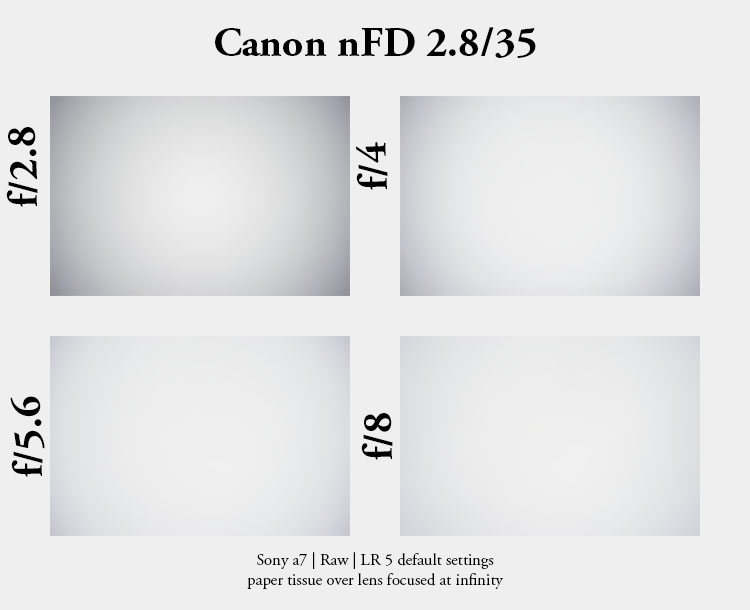
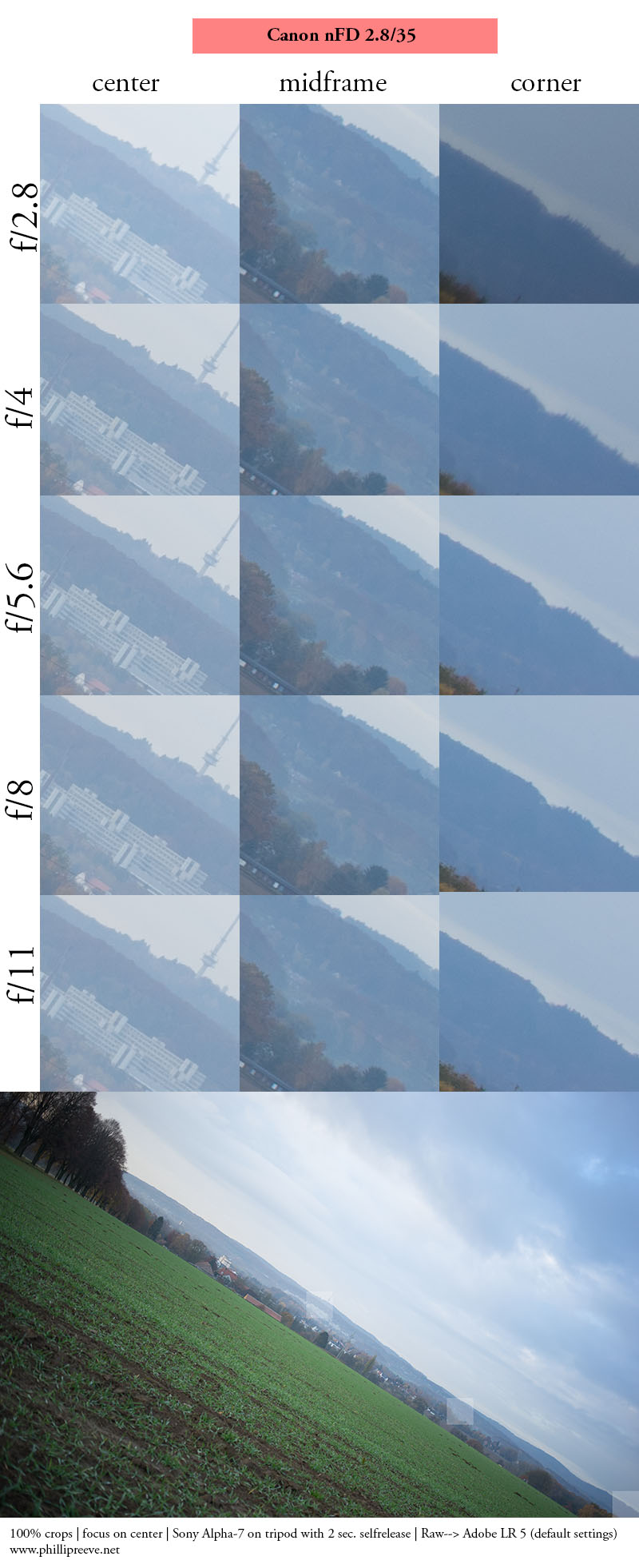
I would love to see you make a review of the fantastic Minolta MC W.ROKKOR-HH 35mm f/1.8 🙂
There is a good chance this will happen in 2016 but I already have about a dozen lenses here which i want to review and the MC 1.8/35 is not among them :-).
great article.. i own the canon nfd 35 f/2 its an excellent lens too
I’ve been using one of there lenses on my Canon 5d II..
I converted it by replacing the lens mount.
These new mounts are now available on eBay and Amazon.
I have tried 2 copies of the FDn 35 2.8. Neither of them performs well. One is slightly decentered. The other one is unsharp.
Neither of them is up to the sharpness of the Pentax K 28 3.5.
Was I unlucky with the two copies or the FDn 35 2.8 is just not as sharp as the Pentax K 28 3.5?
I think you had bad luck with your copies. While mine doesn’t have quite the contrast of the Pentax it’s sharpness is very good.
Thanks. I might try another one.
You also recommended the Minolta MD 3 2.8. Is it a better choice than the Canon FDn?
about the same
Thank you. This is a great review!
I got another copy. This seems to be a good copy. It is slightly sharper than the pentax K 28/3.5 in the center, and significantly sharper in the extreme corners. Very pleased. Exactly as you pointed out, the contrast is not as high as the pentax though.
that’s good to hear 🙂
I’ve tested the following 35mm on A7:
1. Summicron-M V1 8-elements Germany silver ($2000+)
2. Summicron-M V3 6-elements Canada black ($1200+)
3. Summicron -C 40mm Germany ($500+)
4. Canon FD concave radioactive Thorium glass front lens ($120+)
5. Sony/Zeiss Sonnar FE 35/2.8 ($500+)
and the winner is #4, why?
+ sharpness as good as the best crons
+ best contrast
+ lowest price
– big and heavy
– hard to find
the loser is #2, doesn’t perform well on A7, corners are soft until 5.6.
#1 is as good as #4 in sharpness but not in contrast. If you prefer a small compact high performer – go for #3 or the equivalent Minolta Rokkor-M latest version that has multi coating and 30-40% cheaper than the cron.
The Sony/Zeiss Sonnar FE 35/2.8 is one step slower and doesn’t perform as good as the others. Its strength is AF and small size, still it’s not bad. But not worth its high price.
I wonder why nobody is calling for the Nikon 28mm f2.8 AIS. It has supposedly no distortion, great flare resistance, and CRC for great distortion-free quality at any focal length. It’s the most obvious choice in 28mm f2.8 if you ask me.
I’ve struggled to replace this lens in my lineup, it offers so much for such a small price. My copy is excellent and very sharp, I only wish it had more contrast. I also managed to find the bayonet lens hood for it, but after using it I prefer a normal screw-on metal hood.
I’ve been trying to find a good copy of the C/Y 35mm 2.8. I love the rendering from these lenses, but every copy I’ve tried has haze and alignment issues. Unsure if it’s bad luck or how the lens was made, but I’m about to stop looking and stick with this Canon – it’s good enough and cheap enough.
Maybe a Pentax 3.5/35? In my experience these have higher contrast as well. Only downside is the focus ring which turns the wrong way.
Thanks for your amazing reviews! Would you mind to compare the new Samyang 35 2.8 pancake with these vintage 35 (canon, Olympus, Minolta,zeiss distagon)?
Well I own exactly one of these…
Phillip -thank you very much for this site and detailed info. Just in the past couple of days I realized the potential of manual lenses. This specific one interests me. Searching this same lens spec I notice online other lens ‘body’ look than what you have here. Does this matter? Would other ‘bodies’ might indicate different quality than this one?
Hope my question makes sense.
Thanks.
I am not sure about other versions in this case but a differebt body usually means different optical design.
Thank you. That validated my concern.
Phillip -just FYI, when I click on the link to get to your review of the Minolta MD 2.8/35, this is the page it brings me to, not the Minolta one. I’d like to see your review of the Minolta lens please.
I haven’t published a review of the MD 2.8/35. https://phillipreeve.net/blog/guide-adapters-minolta-mc-md-lenses/“>Here is my short summary.
Phillip. Trying to help with technical error in your site as it appears. When I’m the page of manual lenses on budget less than $100 there is a link for review just below the Minolta lens. This leads to this Canon lens review page.
Also, the link you just posted in your reply is not working, at least not for me.
Doron
I must say — Now, after using this cheap Canon nFD 35mm f2.8 (payed 60EUR) for several years, i’m still all the time impressed how sharp the images are.
I’ve not come across any other lens with that kind of value for money and i doubt there is one.
If you’re into Canon FD lenses this is a must have!
And as long as there is no 35mm/1.8 option for Sony <500EUR (like the Canon RF one), this old gem stays my lens of choice for 35mm focal length.